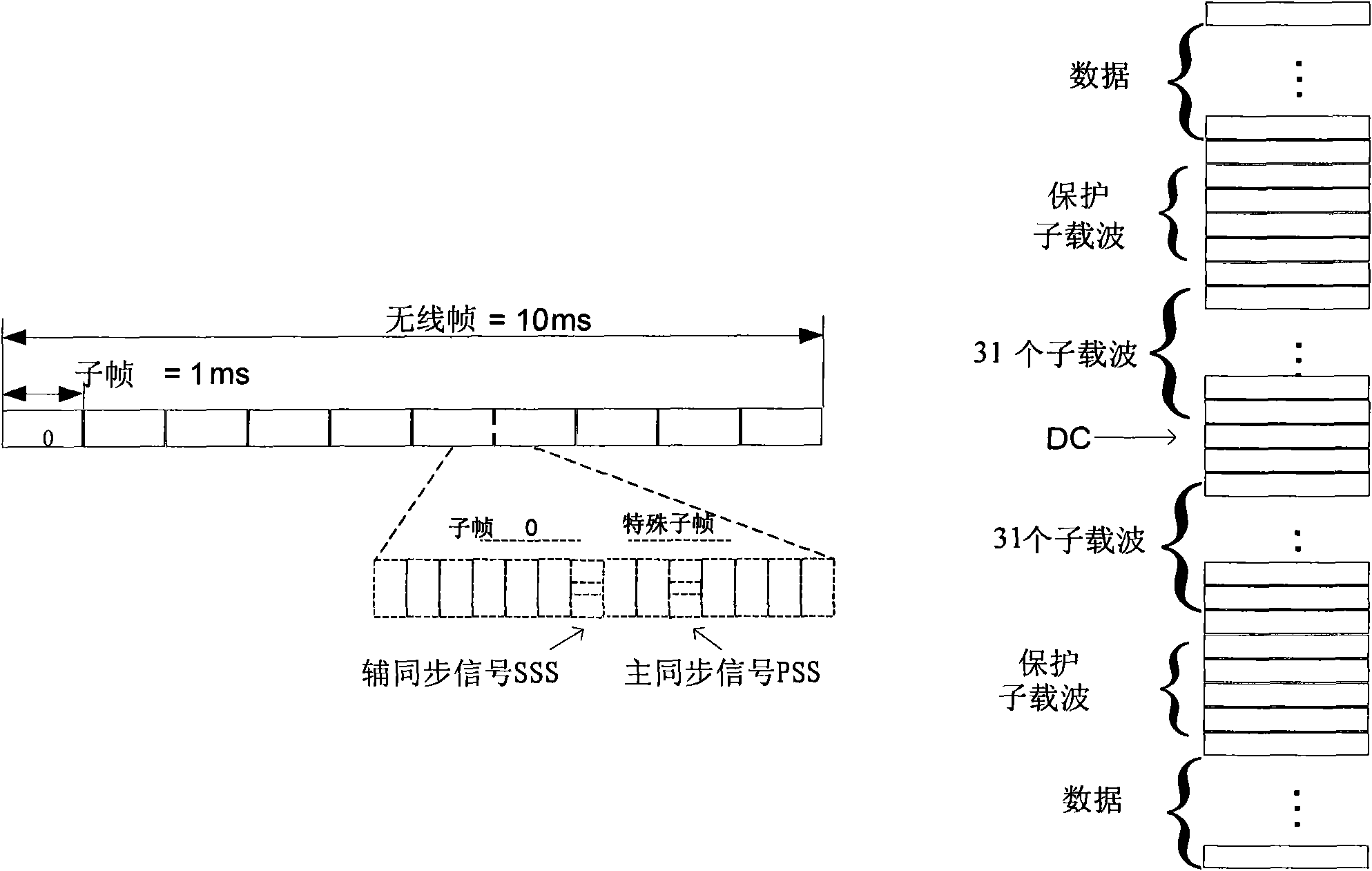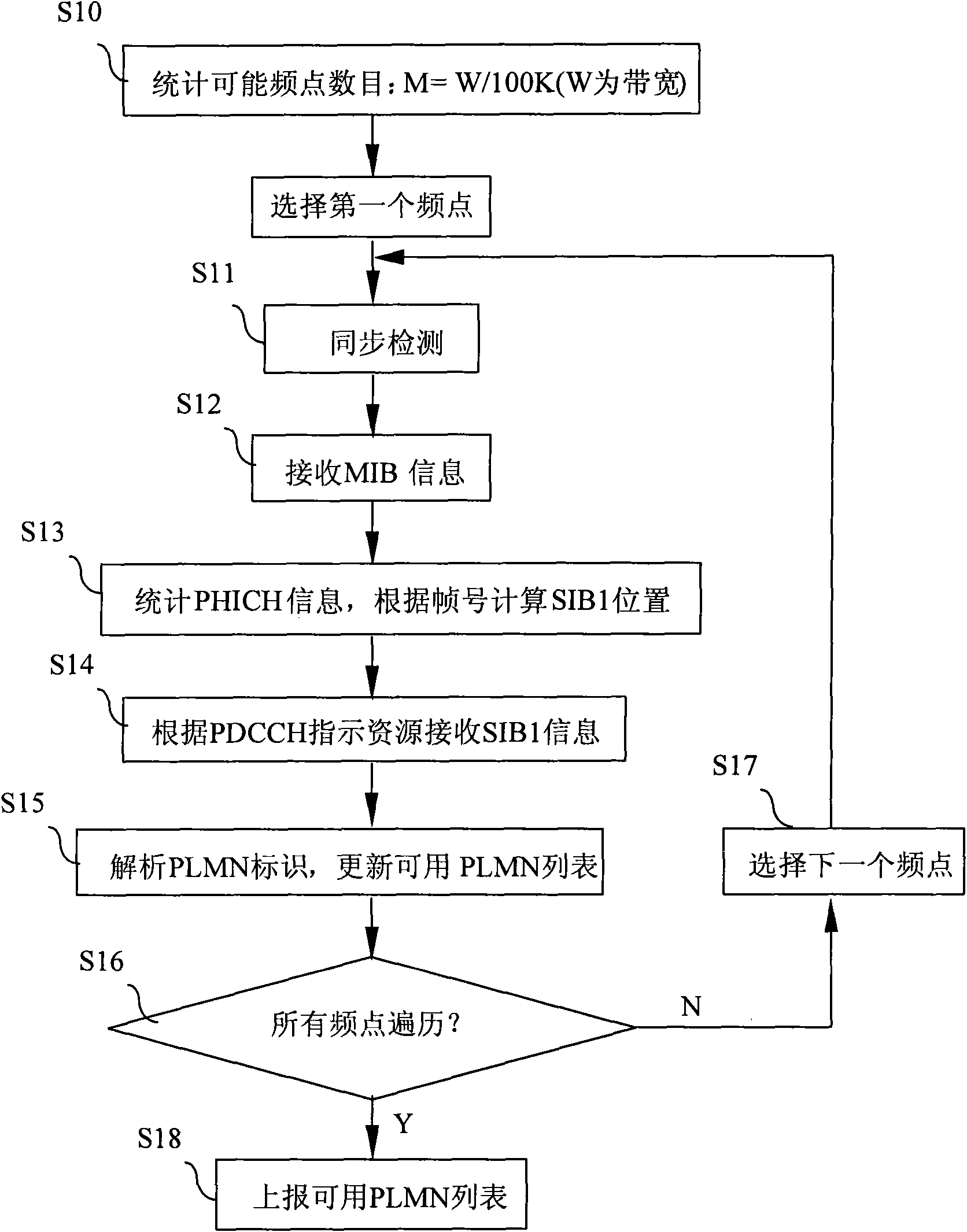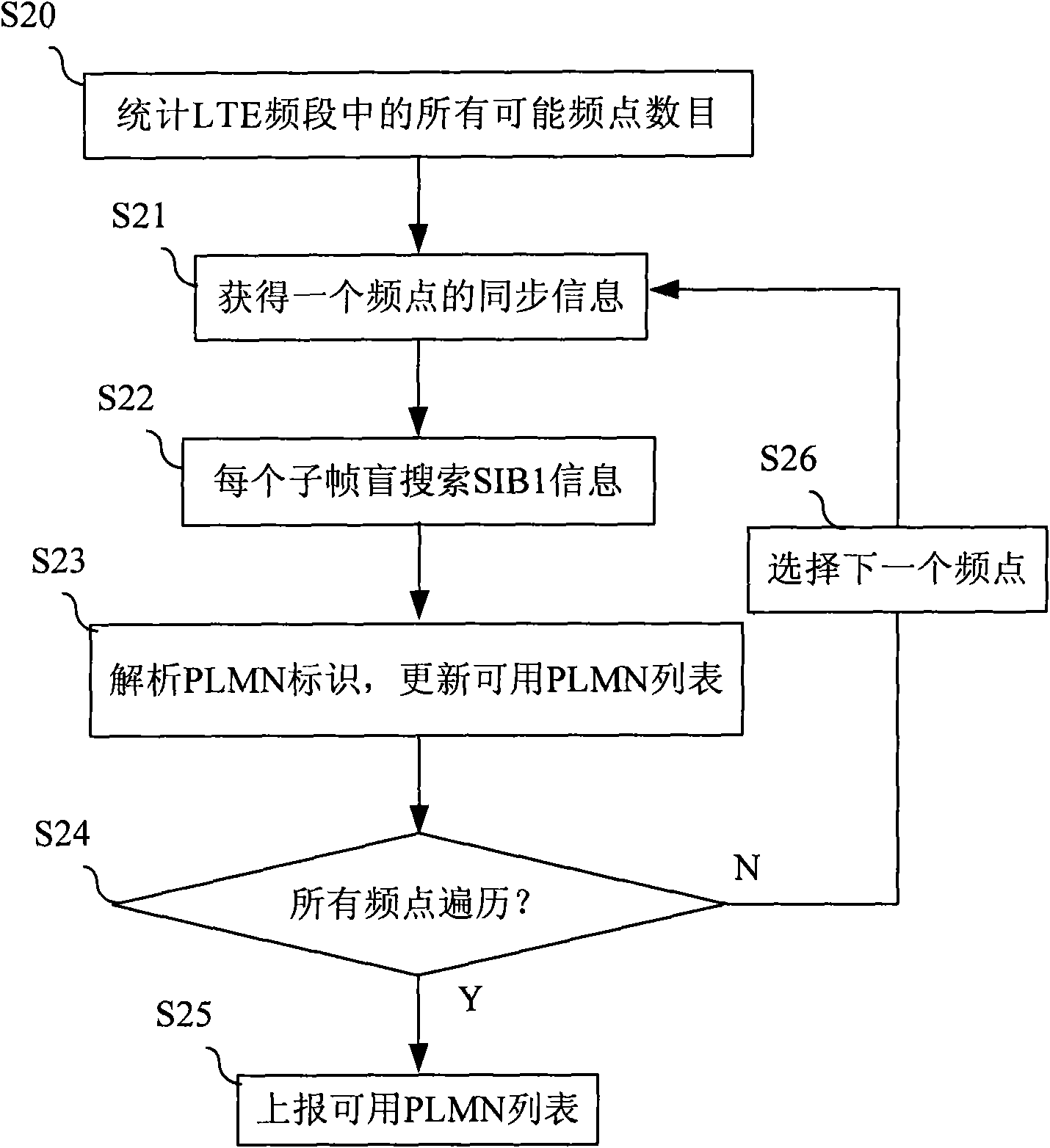Method and device for searching PLMN (Public Land Mobile Network) of TD-LTE (Time Division-LongTerm Evolution)
A search method and frequency point technology, applied in the field of PLMN search methods and devices, can solve the problems that users cannot bear waiting, signal arrival time difference, time and power consumption overhead, etc.
- Summary
- Abstract
- Description
- Claims
- Application Information
AI Technical Summary
Problems solved by technology
Method used
Image
Examples
no. 1 example
[0066] refer to image 3 As shown, the PLMN search method for TD-LTE of the present embodiment includes the following steps:
[0067] Step S20, select the available frequency points in the LTE frequency band, in this embodiment, count the number M of all possible frequency points in the LTE frequency band, assuming that W is the bandwidth of the LTE frequency band, and 100KHz is the predetermined frequency interval, then M=W / 100K .
[0068] Step S21, obtaining synchronization information of a frequency point; in this embodiment, synchronization detection can be performed on each possible frequency point to obtain 10 ms synchronization information;
[0069] Step S22, after the synchronization information is obtained, the terminal detects the SI-RNTI within the maximum control field range where a PDCCH (Physical downlink control channel, physical downlink control channel) may exist, and receives the PDSCH according to the analyzed DCI (Downlink Control Information, downlink con...
no. 2 example
[0084] refer to Figure 4 As shown, compared with the first embodiment, this embodiment first screens available frequency points to reduce the number of frequency points that need to be searched. The PLMN search method for TD-LTE of the present embodiment comprises the following steps:
[0085] Steps S30 and S31, selecting an available frequency point in the LTE frequency band. In this embodiment, firstly, in step S30, the number M of all possible frequency points in the LTE frequency band is counted. Assuming that W is the bandwidth of the LTE frequency band and 100 KHz is the predetermined frequency interval, then M=W / 100K. Then in step S31, the characteristic RSSI of each frequency point is calculated, and the strategy of absolute value+TopN is used to screen available frequency points.
[0086] For RSSI measurements, specifically, from figure 1 From the time-frequency structure of the synchronization signal shown, it can be seen that the PSS and SSS will appear in 72 su...
no. 3 example
[0101] refer to Figure 5 As shown, compared with the second embodiment, this embodiment further adopts the fast synchronization technology. The PLMN search method for TD-LTE of the present embodiment comprises the following steps:
[0102] Steps S40 and S41, selecting an available frequency point in the LTE frequency band. In this embodiment, first, in step S40, the number M of all possible frequency points in the LTE frequency band is counted. Assuming that W is the bandwidth of the LTE frequency band and 100 KHz is the predetermined frequency interval, then M=W / 100K. Then in step S41, the characteristic RSSI of each frequency point is calculated, and the strategy of absolute value+TopN is used to screen available frequency points.
[0103] For RSSI measurement, specifically, for any possible center frequency point F i , continuously receive at least 5ms of data within a bandwidth of at least 1.08MHz, and define its characteristic RSSI as follows:
[0104] ...
PUM
 Login to View More
Login to View More Abstract
Description
Claims
Application Information
 Login to View More
Login to View More - R&D Engineer
- R&D Manager
- IP Professional
- Industry Leading Data Capabilities
- Powerful AI technology
- Patent DNA Extraction
Browse by: Latest US Patents, China's latest patents, Technical Efficacy Thesaurus, Application Domain, Technology Topic, Popular Technical Reports.
© 2024 PatSnap. All rights reserved.Legal|Privacy policy|Modern Slavery Act Transparency Statement|Sitemap|About US| Contact US: help@patsnap.com










